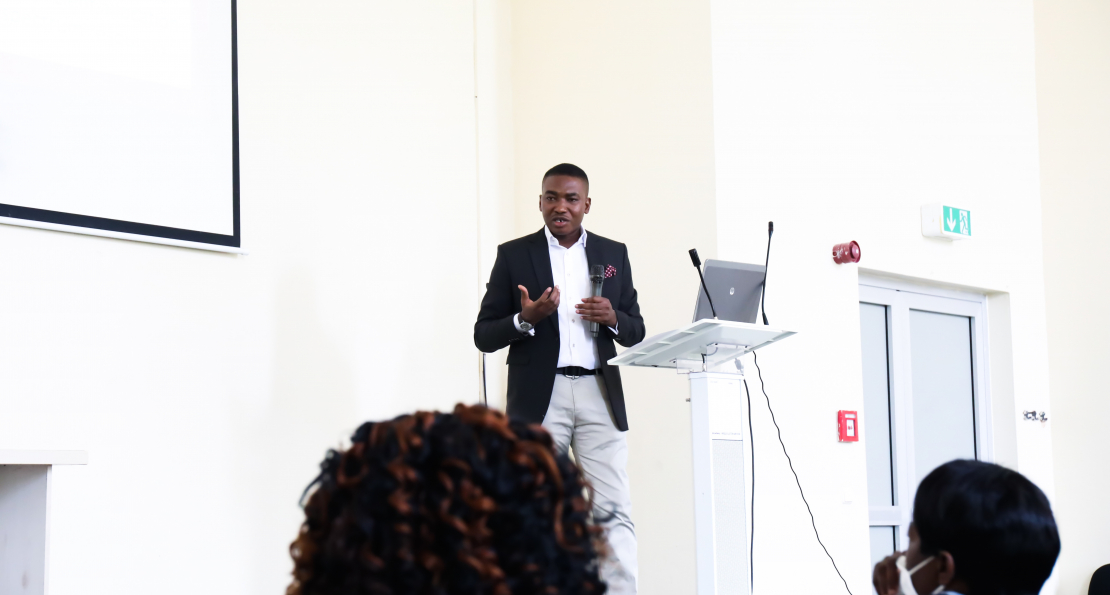With 5.3 billion people subscribed to mobile technology services, any whisper about the danger associated with mobile phones is sure to reverberate as a roar. This was just the case with 5G at the height of the Coronavirus pandemic. Social media was agog with rumors about 5G mobile technology causing or spreading the virus.
The World Health Organization(WHO) and the International Commission on Non-Ionizing Radiation Protection say it is unlikely that radiation from telecommunication base stations can cause a significant health hazard. However, both institutions also acknowledge that some ‘uncertainty’ still remains.
This uncertainty is the crux of Dr. Uchenna Orji’s academic research presented at the School of Law’s seminar on Friday the 16th of April,2021.
His paper argues that the fact that some ‘uncertainty’ still exists clearly underscores the need for precautionary regulation. Accordingly, the paper makes a case for precautionary regulation in the deployment of 5G network infrastructure in developing countries such as Nigeria. It is even more pertinent given the absence of adequate resources to address environmental protection and public health concerns. He also suggests the recalibration of environmental standards on telecommunications network deployment in this regard.
Dr. Orji’s paper is titled: “Public Health Concerns over 5G Networks between Superstition and Precautionary Regulation”.
Even though science disputes many superstitions, some Africans believe in them while others take it with a pinch of salt. Cultural influences are largely to blame for the stronghold of superstition on many Africans. Dr. Orji believes the myth about 5G can only be demystified through empirical analysis.
“We may want to give in to these superstitions but this seminar addresses objectively the issues surrounding 5G network superstition.”
The evolution of mobile technology is categorized into generations. With each progression, technology became more and more sophisticated. Beginning with the first generation (1G) up to 4G networks. The 4G network’s capacity is so advanced that while users are in motion, they can download 100MB per second, and when stationary they can download 1gigabyte per second.
The contentious 5G network promised maximal exploitation of the Internet of Things (IoT), self-driving cars, artificial intelligence, automated houses, download speeds of 20gigabyte per second and smart cities.
Dr. Orji says the cause for concern over 5G is the increased emission of electromagnetic waves. “Electromagnetic waves can come from many electronic gadgets such as mobile phones, laptops e.t.c.”
5G network communicates via base stations which emit electromagnetic waves. Electromagnetic waves pass through the human body which can possibly damage body cells. As each generation of network progresses, the wavelength decreases, “5G masts must be closer to anywhere the services will be used and thereby increase human exposure to electromagnetic waves.”
Dr. Orji highlighted several research studies which suggested that “base stations cause health issues and increased chances of diseases such as cancer and leukemia”. With respect to 5G network providers have to install more base stations which will lead to more exposure to electromagnetic waves. Other public health and environmental dangers from mobile network deployment include habitat alteration, aesthetic harm, and interference with property rights. The discharge of hazardous materials and waste; greenhouse emission and noise pollution.”
In May 2020 during the Covid-19 pandemic lock down, seventy-seven 5G base stations were destroyed in the UK, over fears about 5G which sparked protests. This hindered the further deployment of the 5G network.
The WHO maintains that local wireless antennas cause possible long-term health effects due to body exposure. The level of geo-frequency exposure from base stations is so low that temperature increases are insignificant and do not affect health.
The conflict in regulatory roles between the National Environmental Standards and Regulations Enforcement Agency (NESREA) and the Nigerian Communications Commission (NCC) on masts installation in Nigeria is another pointer to deficiencies in the regulatory framework on mobile technology.
“5G network needs to be installed every 1000meters. However, it is possible for regulation to reduce their proliferation within every 1000 meters radius. 5G networks can be deployed within the framework of the existing regime for mobile network installation in Nigeria.”Said Dr. Orji.
He stressed the need for precautionary measures especially because this is a human health issue. At the end of his presentation, he called for further research.
“Because the western world do not share the same level of resources with Africa in terms of addressing environmental and public health concerns, there is need for precautionary regulation. Service providers should adopt co-location and mount their gadgets in one spot and limit the multiplication of 5G installations. This will also enable service providers to share their network, resources, and costs.” Said, Dr. Orji
Faculty in the audience echoed thoughts about the role of the Nigerian government, saying the government should be able to protect human rights.
Seminar organizer, Dr. David Adetoro, in his closing remarks emphasized the need for more information and enlightenment about superstitions concerning 5G saying “The present body of knowledge is not enough which is why we organize seminars such as this to create awareness.”
Reported by Gabriel Blessing


